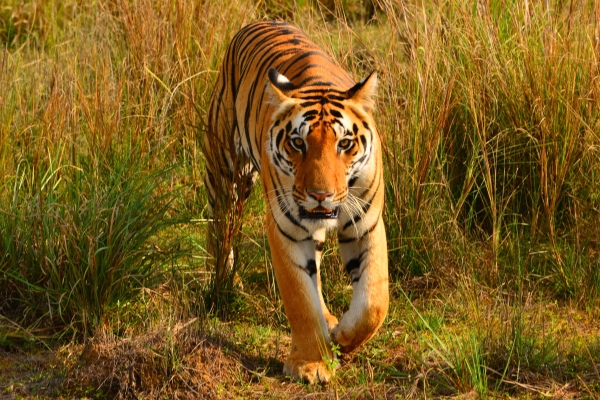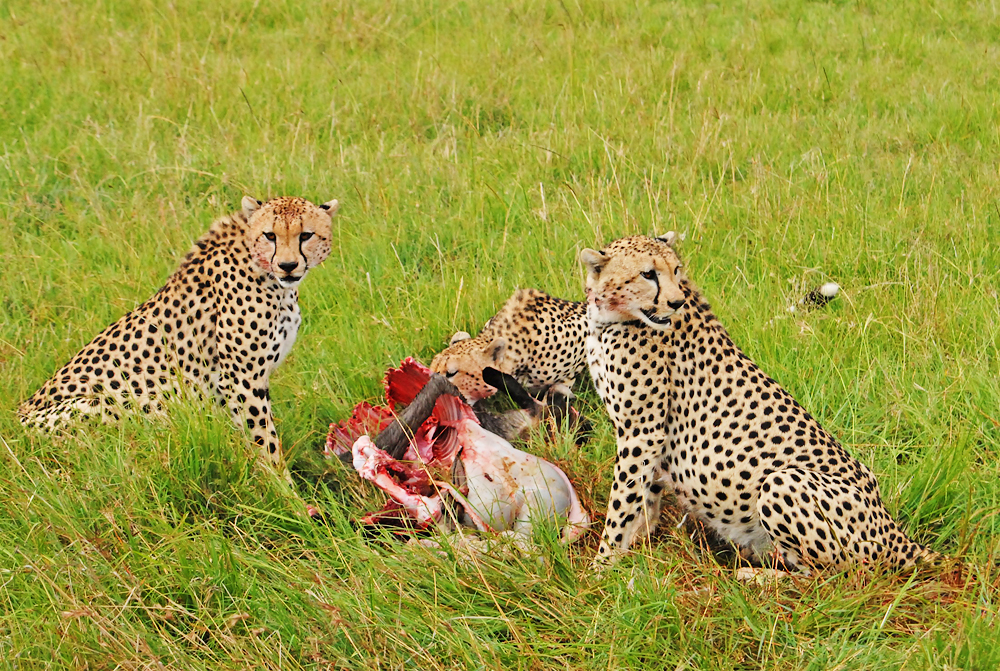

In former times, when farmers had few rights to use wildlife, wild animals were seen as little more than a threat to livestock, crops and infrastructure, as well as community safety. Thus, conservation management took place within protected areas only. In 1967 the commercial rights over wildlife and indigenous plants were given to Namibia’s commercial farmers. The implementation of these rights resulted in wildlife being utilised and valued (“What pays that stays”) by the private sector. People in communal areas received the same rights much later (1996-2001) when policies were adopted to promote community-based natural resource management (CBNRM). Since then the wildlife sector was also driven into a rapid growth on communal land.
In addition to community-based tourism, a large number of commercial farmers established free-hold conservancies and tourism enterprises on private lands, too. In contrast to community-based tourism, commercial conservancies are not supported by the government in any way. Thus, they need to function self-sufficient from the first day. Two well-established examples are the N/a’an ku sê Foundation and NamibRand Nature Reserve – see websites below. The latter one belongs to the Long Run Initiative.
Namibia’s environment is the cornerstone of its tourism industry – looking after it today ensures it is there for tourism tomorrow. Today, about 46% of Namibia’s surface area is under conservation management. This includes national parks and game reserves (19%), communal conservancies and other community conservation (20%), as well as commercial conservancies, private nature reserves and tourism concessions (7%). Another 3% of Namibia are restricted areas (diamond mining in the Southwest of the country).
Community-based tourism in Namibia is based on the joint-venture principle: private sector tourism operators join hands with communal conservancies to build and run lodges, campsites and tours on sustainable principles. High-quality lodges and activities bring income to conservancies which protect wildlife and the environment.
To live with wildlife means striving for balanced land use and a healthy environment. The game does not need to be eradicated from a landscape because it may pose a threat to crops or livestock. Wildlife can create a great range of returns that far exceed its costs. Various types of tourism such as photographic safaris, excursions, adventure tours, research expeditions and even trophy hunting are important tools to reach this goal. Namibia’s CBNRM Programme was selected as a finalist in the 2010 Tourism For Tomorrow Awards by the World Travel and Tourism Council.
Namibia harbours various flagship species like elephant and rhino, as well as the world’s highest population of cheetahs, and it is one of a few African countries that support six species of large carnivores. Lions, spotted hyenas and wild dogs are mainly restricted to protected areas, but cheetahs, leopards and brown hyenas still occur in areas with intensive livestock and/or game farming. Ensuing conflicts between humans and wildlife need to be solved. Nature-interested travellers contribute to various research and education programmes and they support nature conservation financially.
More and more conservancies shall become self-sufficient. A substantial number of conservancies that used to be dependent to some degree on grant aid shall cover their operational costs from own income in the future.
Community-based conservation may grow to a larger number of conservancies up to 90 or 100. As a result, significant further growth of tourism in Namibia shall be facilitated.
Although Namibia has its entire coastline protected through a National Parks network, marine biodiversity is currently essentially unprotected. The status of two marine reserves, which cover less than 1% of Namibia’s marine environment, needs clarification and augmentation with new Marine Protected Areas.
In the mid-nineties, ground-breaking legislation in Namibia laid the foundation for a new approach to natural resource management and conservation. By forming conservancies people in communal areas can actively manage and generate returns from natural resources. This supports environmental restoration, and wildlife populations have increased significantly. As a result, economic benefits to local people through tourism have grown. To see the happiness on the faces of the people whose lives have been improved by the Namibian conservancy programme is the ultimate testimony of success.
The communal conservancy programme has taken Namibia by storm and it has become the most successful CBNRM initiative on the planet. Currently, there are 82 registered communal conservancies, one community conservation association in a National Park, 15 concessions in National Parks or on other state lands, 32 community forests, 66 community rangeland management areas and three community fish reserves in Namibia.
The communal conservancy tourism sector represents a dynamic part of benefit creation within the CBNRM programme. The rapid growth of joint-venture tourism investments and the impressive benefits that are being produced by this sector are distinctly unique to Namibia.
One of the main lessons from the Namibian conservancy programme is that devolving authority over wildlife and tourism to local communities as well as private farmers can work in practice.
Other countries could learn from Namibia to engage visionary conservationists in the field and to enact policy changes by the government that allows rural communities to benefit from wildlife by forming conservancies.
© Linking Tourism & Conservation (LT&C) 2019
We are grateful that you support the work and mission of LT&C! We accept donations through Credit Card, PayPal or international bank transfer:

Donate through Credit Card
Please click the Donate button and then choose your PayPal account
Bank details:
Cultura Sparebank
Pb. 6800, St. Olavs plass
N-0130 Oslo
Name: Linking Tourism & Conservation,
Account no.: 1254 05 95168
IBAN: NO8712540595168
BIC/SWIFT: CULTNOK1
Routing BIC: DNBANOKK
Please mark payments with your name and/or email address
Sign up for an LT&C membership by filling in the details below.
Would you like your LT&C-Example/Initiative to be listed on our website? Please fill in the form below.